

WATLAB
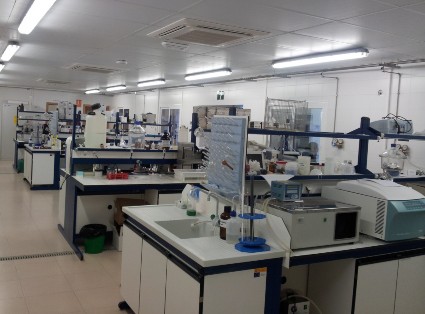
The water technologies laboratory at PSA is used to give an advanced analytic support to the experiments that are carried out at experimental plant scale and at the solar simulators. This laboratory has a total surface of 200 m2 distributed in 6 rooms (4 of them are laboratories) that are described below:
- The general laboratory (94 m2) (Figure 1) contains all the devices associated to a conventional chemical laboratory as well as the main equipment for water characterization. The laboratory is also equipped with a fluorimeter, two suspended and supported activated sludge respirometers (BMT) for biodegradability measurement and the required equipment for the analysis of biological oxygen demand (BOD), chemical oxygen demand (COD), toxicity and phytotoxicity tests (acute and chronic). In addition, the coating equipment that produces immobilised photocatalysts and a Jar-Test system are also available.
- The chromatography laboratory (23 m2) (Figure 2) is equipped with a complete analytical equipment related with the Chemical Environmental Analysis: 3 liquid chromatographs with diode array detectors (HPLC-UV-DAD and 2 UPLC-UV-DAD, one of them also with a fluorescence detector); 2 ionic chromatographs; 2 total organic carbon (TOC) analyzers (including total nitrogen analyzer) and an automatic Solid Phase Extraction (ASPEC).

- The microbiology laboratory (47 m2) with biosafety level 2 (Figure 3) is equipped with a complete equipment related with microbiological analysis: 5 microbiological laminar flow (class-II) cabins, 2 autoclaves, 4 incubators, an automatic grow media preparer and plaque filler and 2 filtration ramps. Moreover, is also equipped with an ultra-fast real-time quantitative PCR (Polymerase Chain Reaction) and all the related equipment to perform these genetic measurements (an fluorospectrometer NanoDrop, specific centrifuges, a high-speed benchtop homogenizer, etc.). Moreover, is also equipped with a homogenizer stomacher for the analysis of food samples related to water reuse essays.

- The microscopy laboratory (11 m2, Figure 4) includes two optical microscopies (fluorescence and phase contrast combination).
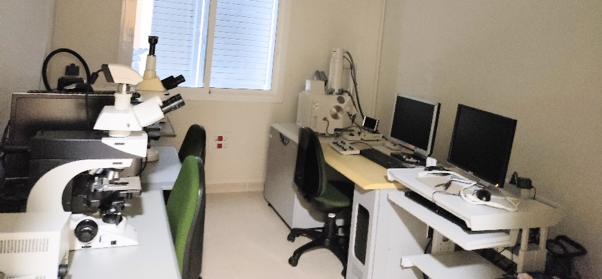
- A storage room (30 m2) to store chemical products and other consumables.
- The WATLAB is completed with an office (17 m2) where there are three workstations for visiting researchers that facilitate the analysis of the data obtained from experiments carried out in the Solar Treatment of Water Unit.
Moreover, the UV and global solar radiation data were also measured and automatically saved throughout the year by a complete monitoring equipment: different pyranometers (Kipp&Zonen, CMP-6 and CUV-5, Figure 5a) to measure global solar radiation (310–2,800 nm) and the global UVA radiation (300–400 nm) at different orientations (horizontal and inclined 37º) (Figure 5b-c). Besides this, two portable radiometers and a spectral spectrophotometer (200 – 1,100 nm; AVANTES) with a double channel are also used to monitor the solar irradiance inside the solar simulators and the solar spectral irradiance at the specific location of the solar tests, respectively.
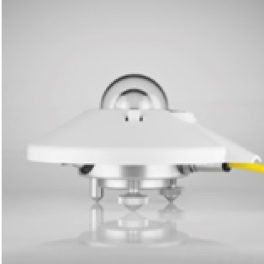 (a)
(a)
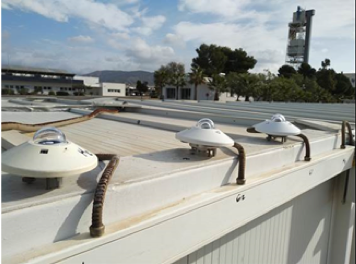 (b)
(b)
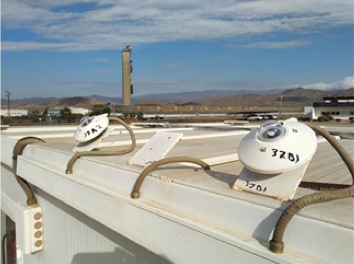 (c)
(c)